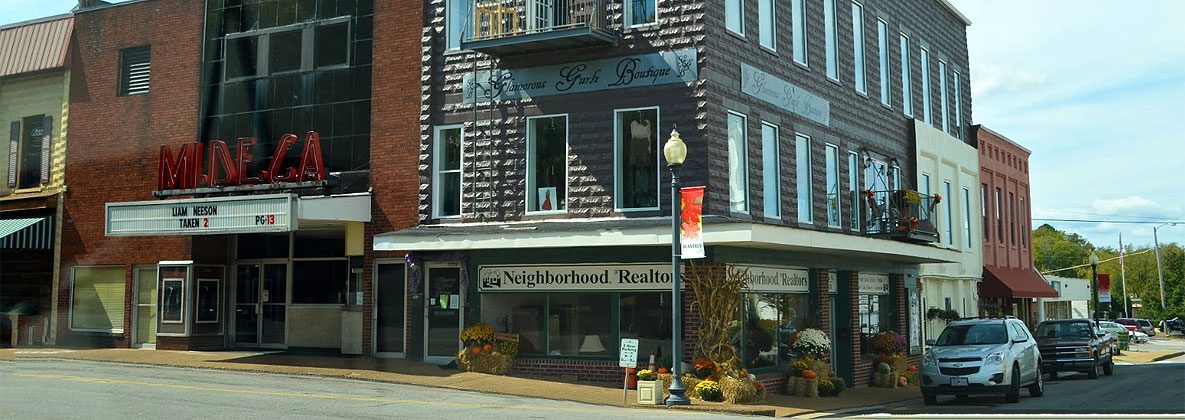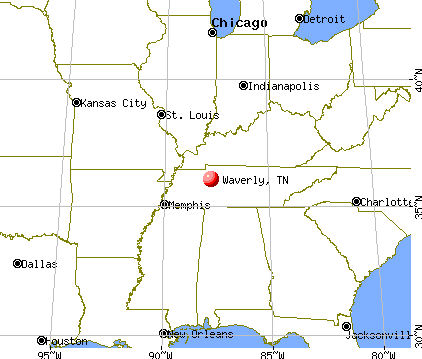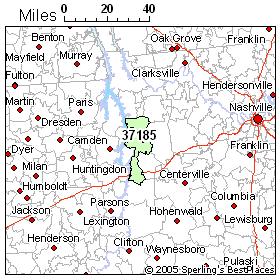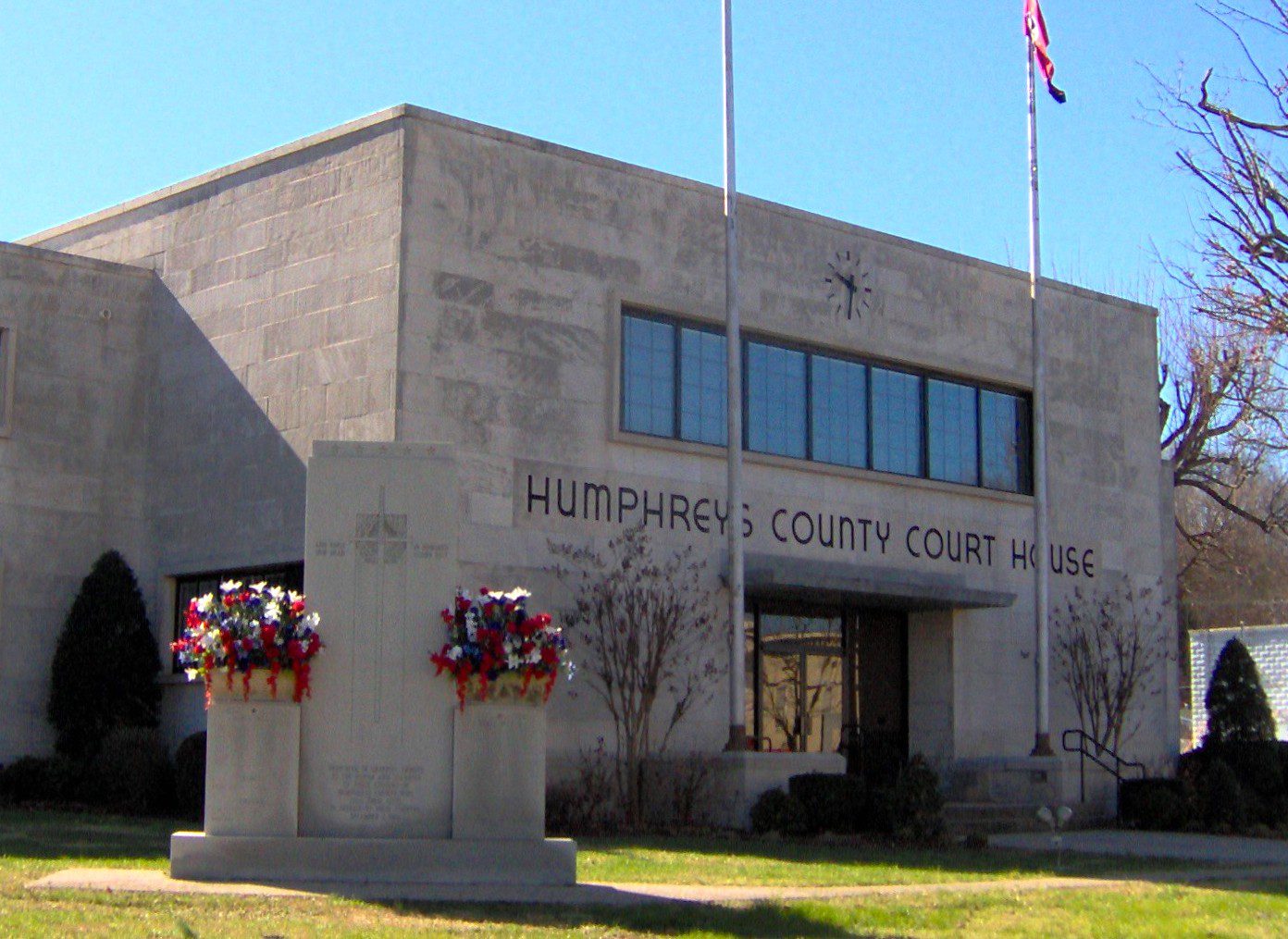
After Benton County was created from Humphreys County in 1835, it was necessary to establish a county seat. A line of survey was run from Reynoldsburgh due east, and the mid way point was found to be on Blue Creek About two miles south of the present site of Waverly. At this point in history, the site of Waverly was shown on maps as Pavatts.
Because the stage line passed through this site, the commission selected Pavatts as the place to locate the new county seat. The name Waverly was given by Stephen Pavatt because of his fondness for Sire Walter Scott's Waverley Novels. David Childress owned and donated the land for the town; Issac Little was the surveyors, and Waverly was incorporated in 1838. The population in 1838 was a mere handful. Present population is estimated to be around 4,000.
The commissioners were required to located and lay out the new town, reserving near the center a public square on which to erect a courthouse, jail, and stocks. A plot was also set aside for construction of a jail. Income received from the sale of lots was to furnish the means of constructing the courthouse, jail and stocks.
A courthouse costing $6,000 and modeled after the one at Reynoldsburgh was erected in 1836. A brick jail was also built, costing $3,000. Town lots were sold in 1836; and the first dwelling, a log structure, was erected by William Draughon in 1837 on the northwest corner of the public square. A hotel was also built in the same area. About the same time, John B. Patrick erected a log house in the southeast part of town. William Teas constructed a double log house in the center of the south side of the public square, using one side for the first business established in the town. Teas' business bought and sold hides and whiskey. The firm of Yeats & Harris operated a whiskey store on the north side of the square.
Four courthouses have been built in Waverly. The first was destroyed by fire in November 1876; the second was destroyed by fire on June 10, 1898, supposedly by arson, with all records being destroyed, except those kept in lawyers' offices. The third courthouse was built in 1899 and served until the present one was completed in 1952.
Churches have from the first played an important part in the life of Waverly. From the time of its founding to the present, citizens have displayed keen religious appreciation. The first church, a brick building on the site of the present Cumberland Presbyterian Church, was built in 1847. This was a common meeting house in which all religious groups met, and the upstairs served as a meeting place for the Masons.
Schools have always been considered a vital part of town. The first school, the Waverly Academy, was a subscription school established in 1847. From the school evolved excellent school facilities and educational programs for both elementary and high school students. Our educational system compares favorably with any in the state. The dedicated faculty and skillful operation of the school system, as well as excellent facilities, contribute notably to development of the county and town.
The economy of Waverly has altered drastically during the course of its history. Merchandising and the trading of various wares ranging from whiskey, hides, and staples for an agricultural area to providing the needs of an industrial region, have been the transformation in little more than a century.
The first means of transportation was by stage coach. The route through Waverly determined the selection of the site as county seat. People traveled locally in buggies, wagons, and on horseback. A journey to an adjoining county was at least an overnight trip. With the advent of the railroad, commercial as well as passenger travel changed to a pronounced degree. The first railroad, the Nashville and Northwestern, was constructed to Johnsonville in 1864, making that town a supply base for the Federal army.
Passenger service gradually declined after World War ii. The family automobile and increase bus transportation expanded to a marked degree; air travel was also utilized to a greater extent. But now, the long freight trains through Waverly display the continuing economic growth of this commercial region with the railroad giving us shipping access to all parts of the continent.
From its founding, doctors and lawyers have been fit to locate in Waverly. We have been fortunate in having excellent doctors and capable lawyers residing here. Professional people have always participated actively in the life of Waverly and Humphreys County.
From dirt roads to the interstate system is a great leap. The gravel roads of long ago were maintained by a small road force and by individuals working out or paying what was then known as road tax; all men were required to pay a certain tax in money or labor in kind. From the time mule-drawn shovels to the bulldozer and heavy-duty trucks has been less than a life time.
We are immensely proud of our facilities pertaining to a full life - spiritual, educational, professional and social. In less than 150 years, Waverly has the enormous privilege of being so situated that it seems our economic development is assured, and we have become a part of the life required to receive and develop these assets.
By: John H. Whitfield, President Humphreys County Historical Society
© 2024 All Rights Reserved | WJZM-FM
P.O. Box 66
Woodlawn, TN 37191
931-645-6414
866-999-1051
Powered by Media Lifeline







